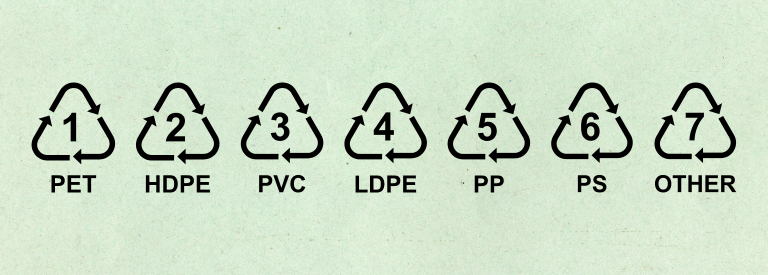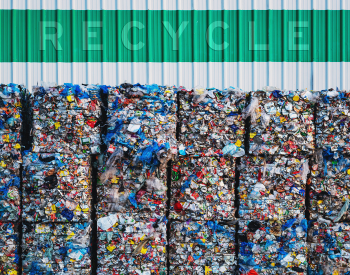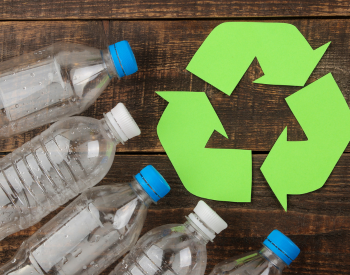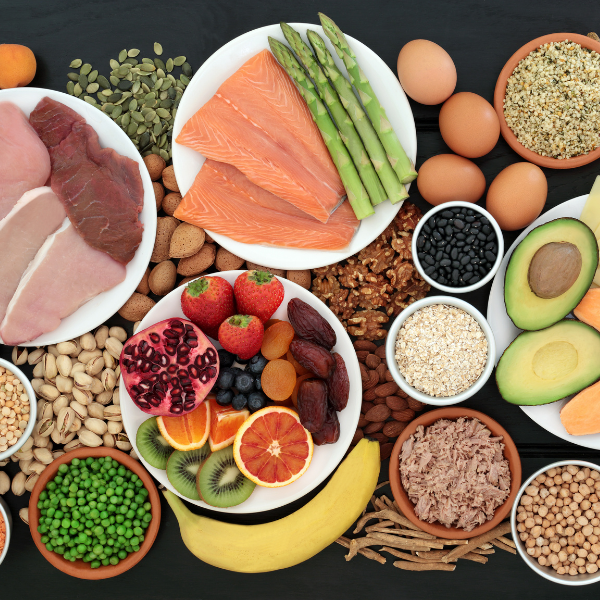Every day, millions of consumers worldwide come into contact with plastic products. From food packaging to household items, plastic plays a significant role in our daily lives. But with the ever-growing concern about environmental sustainability, understanding the importance of plastic recycling and the symbols that accompany it has become crucial.
If you've ever turned a plastic bottle or container upside down, you've likely noticed a peculiar symbol: a triangle formed by three chasing arrows with a number inside. These are plastic recycling symbols, and they hold the key to responsible recycling.
What Are The Seven Main Plastics?
Plastics have woven their way into our daily lives, making many tasks more convenient. However, not all plastics are created equal. To distinguish between these materials, we categorize them into seven primary types of plastic resins. Each of these has its distinct properties, applications, and recycling protocols. Let's delve deeper into these types and better understand their significance.

1. Polyethylene Terephthalate (PETE or PET)
- Properties: PETE, with its clarity, durability, and excellent gas and moisture barrier properties, is also lightweight, making it perfect for packaging.
- Common uses: It's predominantly used in soft drink bottles, packaging for food, and textile fibers.
- Recycling: PET is broadly recycled. When reprocessed, it's often turned into fibers for items such as carpets or garments.
2. High-Density Polyethylene (HDPE)
- Properties: HDPE is known for its strength and resistance to moisture. It's also more opaque than PET.
- Common uses: Items such as milk jugs, shampoo bottles, toys, and plastic bags are commonly made of HDPE.
- Recycling: HDPE is frequently recycled into products like plastic lumber, trash bins, and outdoor furniture.
3. Polyvinyl Chloride (PVC)
- Properties: PVC is versatile and known for its stability and resistance to oils and chemicals.
- Common uses: PVC is found in a diverse range of items, from pipes and toys to bank cards, vinyl mats, and flooring.
- Recycling: PVC recycling is rarer due to potentially hazardous fumes upon heating. When it is recycled, PVC may be transformed into items like traffic cones or floorings.
4. Low-Density Polyethylene (LDPE)
- Properties: LDPE, more flexible than HDPE, has a low melting point and serves as an effective moisture barrier.
- Common uses: It's typically employed in products like plastic bags, packaging films, squeeze bottles, and wire insulation.
- Recycling: Not all facilities accept LDPE for recycling. However, when recycled, it evolves into products like waste bin liners.
5. Polypropylene (PP)
- Properties: PP is tough and resistant to chemicals. It's also versatile with a high melting point.
- Common uses: It is widely used in items such as yogurt containers, diapers, and auto parts.
- Recycling: PP can be recycled into automotive parts, industrial fibers, and other containers.
6. Polystyrene (PS)
- Properties: Polystyrene can either be rigid or foam-like. It acts as an insulator and barrier to moisture.
- Common uses: It's commonly found in items like coffee cups and lids, food service articles, insulation, and egg cartons.
- Recycling: PS is accepted by fewer recycling centers, but when recycled, it's often transformed into insulation or other foam-based products.
7. Other
This category encompasses a variety of plastics that don't fit into the initial six categories.
- Polycarbonate resins: Renowned for optical clarity and impact resistance, often utilized in products like eyeglasses and DVDs.
- Acrylic: Known for its transparency and resistance to shattering, acrylic products are used widely in light fixtures and nail extensions.
- Nylon: Durable and wear-resistant, found in items like clothes, ropes, and carpets.
- Fiberglass: Used for reinforcing plastics, enhancing their strength and durability.
- Polyactic fibers (PLA & CPLA): Using renewable resources and offering biodegradable properties, they are commonly used in compostable products.
Recycling: The recycling protocols for this category can vary widely depending on the specific type and local facilities.
Why Do These Recycling Symbols Matter?
Comprehending these recycling symbols carries paramount significance for a number of reasons that critically encompass our social responsibilities, efficiency in recycling processes, and consumer awareness.

Environmental Responsibility
Environmentally responsible behavior plays an irreplaceable role in our endeavors to create a greener planet. The key to preserving the health of our global environment rudimentarily starts with proper recycling. Consistent and correct recycling practices help inhibit an excess of plastics from detrimentally landing in our oceans, where they can inflict harm on diverse marine life. Over an extended period, these unattended plastics decompose into smaller fragments, forming microplastics. Microplastics pose an unsettling, yet often overlooked, threat to marine and terrestrial ecosystems. They can assimilate toxins, carrying potentially hazardous substances to every nook and cranny in our ecosystem when ingested by animals and marine life.
Efficient Recycling
Awareness and understanding of each recycling symbol play a key role in ensuring that each type of plastic finds its way to its designated recycling stream. This conscious segregation of waste contributes substantially towards enhancing the efficacy of recycling processes. The cleaner and more separated the contribution, the more enhanced the rate at which recycling can occur. This also minimizes the potential for contamination, often a significant problem resulting from the misdirection of certain plastic types, thereby ensuring a greater likelihood for plastics to be continually reused rather than ending up in a landfill or the natural environment.
Consumer Knowledge
An informed consumer, armed with the knowledge of the different types of plastics (via recycling symbols), has the potential to adjust their purchasing decisions in a manner that favors the environment. When consumers are able to comprehend the implications of each recycling symbol, they can then consciously steer towards purchasing items that use more easily recyclable or environmentally friendly plastics. This not only helps reduce the burden on recycling plants but also encourages manufacturers to utilize more sustainable and recyclable options, thus playing a crucial role in forming a cycle that encourages sustainability.
Where Did Recycling Symbols & Numbers Come From?

The recycling symbols and accompanying numbers, formerly known as the Resin Identification Codes (RICs), originated in the 1980s as a response to the increasing need for plastic recycling standardization. The Society of the Plastics Industry (now known as the Plastics Industry Association) in the United States introduced these symbols in 1988. Their primary purpose was to provide recyclers and consumers with a consistent method to identify the resin content of plastic products. This categorization would aid in sorting plastics more effectively for the recycling process. The familiar triangle of chasing arrows was designed to represent the recycling loop, with each number from 1 to 7 signifying a different type of plastic resin. Over time, these symbols have become globally recognized, playing a vital role in plastic recycling efforts and consumer awareness.
Wrapping Up
The next time you encounter a plastic item, flip it over and check its recycling symbol. It's a small step, but with informed decisions and responsible recycling habits, we can all play a part in reducing the plastic footprint on our planet. Remember, while the symbols provide a guide, always check with your local recycling program to see what plastics they accept. Let's make a more sustainable future together!






